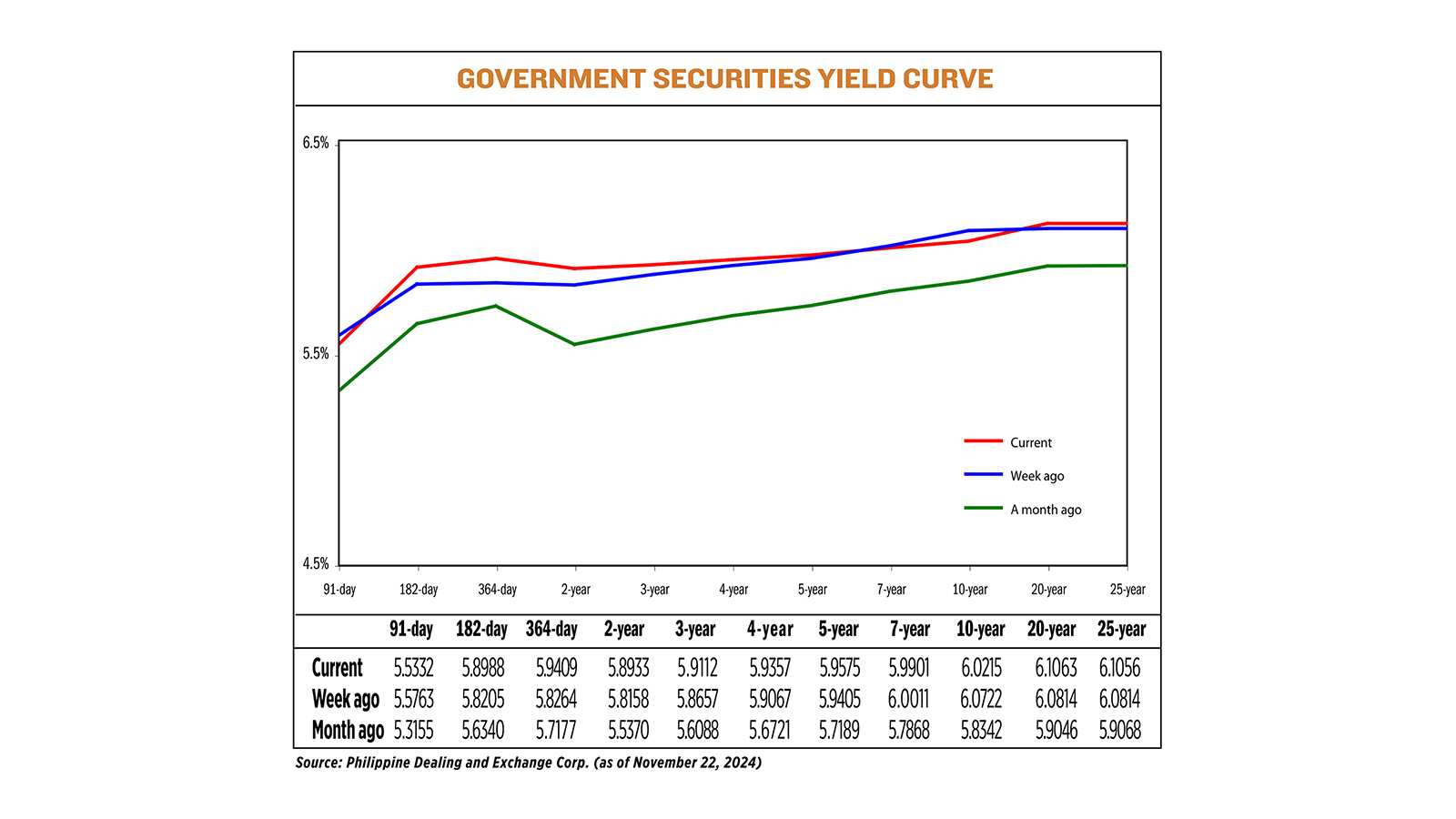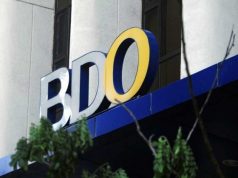Government yields edge higher as market awaits policy signals

YIELDS on government securities (GS) rose last week as the market stayed on the sidelines, awaiting further policy cues from the Philippine central bank and the economic policies of US President-elect Donald J. Trump.
The yields, which move opposite to prices, went down by an average of 2.78 basis points (bps) week on week, based on the PHP Bloomberg Valuation Service Reference Rates as of Nov. 22 published on the Philippine Dealing System website.
Yields on the 182- and 364-day Treasury bills (T-bills) rose, while the yield on 91-day T-bills fell.
Two-, three-, four- and five-year Treasury bonds (T-bonds) rose, while the yield on seven-year T-bonds dropped. The rates of the 20- and 25-year T-bonds went up, while rate of 10-year T-bonds fell.
The volume of government securities rose to P23.45 billion on Friday from P16.13 billion on Nov. 15.
“Market players remain sidelined as market awaits the next Monetary Board meeting in December for a 25/50 bps cut as the economy slows in the third quarter of the year,” Jonathan L. Ravelas, senior adviser at Reyes Tacandong & Co., said in a Viber message.
Bangko Sentral ng Pilipinas (BSP) Governor Eli M. Remolona, Jr. last week gave mixed signals if they would pause or cut rates on Dec. 19.
Rising inflation could prompt the Philippine central bank to pause its easing cycle, while slowing growth could spur another rate cut, he said. The BSP has cut rates by 50 bps since August.
Mr. Ravelas said the rising 10-year US Treasuries are also influencing global rates. Last week, the 10-year US Treasury yield climbed more than 14 bps to 4.433%, the highest since July, as market players bet on US economic growth under Mr. Trump.
“Government security yields were much driven by headlines in the US specifically Trump-related,” said the bond trader in a Viber message.
Reuters reported that the dollar rose to a 13-month high in choppy trading last week as investors assessed the latest labor market data and comments from Federal Reserve officials for the path of interest rates, while Bitcoin continued its march toward the $100,000 level.
Weekly initial jobless claims dropped 6,000 to a seasonally adjusted 213,000, a seven-month low, and below the 220,000 estimate of economists polled by Reuters, indicating job growth rebounded after being disrupted by hurricanes and labor strikes last month.
Recent comments from US Fed officials, including Chairman Jerome H. Powell, have indicated the central bank might take a slower course in its rate cut path, while concerns that Mr. Trump’s policies could reignite inflation have helped push the dollar to a high of 107.15, its highest since Oct. 4, 2023.
“The peso hitting P59 is also a concern as the market wants to see if the central bank is really not concerned about the peso weakness that much,” the bond trader added.
Last week, the Philippine peso hit P59 against the dollar, the weakest since Oct. 17, 2022. This marked the first time the peso returned to the P59-a-dollar level. — Lourdes O. Pilar



